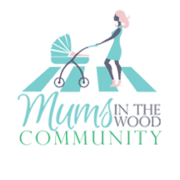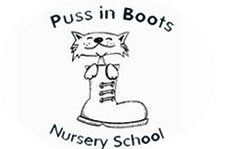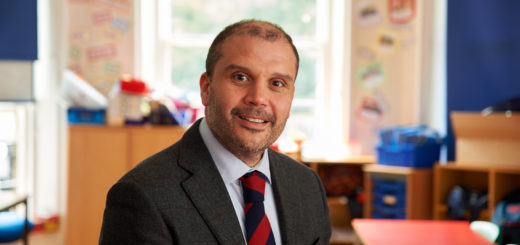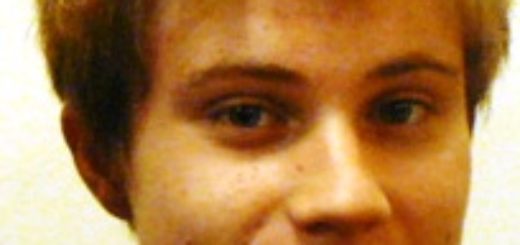Exclusive Interview with the Headmistress of Puss In Boots Nursery
On 24th April we had the pleasure of meeting with the passionate and inspiring headmistress of Puss in Boots, Amelia Aptaker. Amelia has been leading the nursery for approximately 10 years and both her children have attended the nursery over the years. She originally studied theology at Cambridge followed by teacher training. Afterwards she gained experience at private prep schools in London as well as at the British Council school in Madrid. She became passionate about early years’ education and decided to put her experience to work at Puss in Boots. Amelia comes across as warm and caring while at the same time intellectually driven and constantly thinking of how to improve the learning experience of the children. Inspiring the children to want to learn is what seems to underlie the curriculum and the entire set-up of the nursery rooms and garden. It is important to her that the children motivate themselves and show satisfaction in meeting the goals they chose themselves.
Question:
Founded in 2003 Puss in Boots has a firmly established place in the community by now. What do you offer families that sets you apart from the other nurseries in the neighbourhood?
Answer:
Puss In Boots is special because of our highly experienced and dedicated team with a qualified teacher at the helm. We work hard to improve the nursery, always keeping the children and their best interests at the centre.
We offer flexibility with sessions and days, this is also part of keeping the child’s interests at the centre; it enables parents to choose the amount of sessions that work best for their child. Our session times 9-12, 9-1, 9-3.30, are options that work for children, who often add longer sessions as they develop and become ready. Parents who choose us are usually looking hard for the best first social and educational experience outside the home.
Different age groups work together. This means that no interested child is held back from accessing an experience or teaching because they are ‘only 2’, nor is any child pushed to do something that is developmentally inappropriate for them, simply because they happen to have turned 4. We offer a stimulating and exciting environment, and we help children to access this at their developmental level. Skilled teachers start with the children’s interests and ensure that children are constantly challenged to take the next step in their learning.
We have lots and lots of space, probably the most indoor space per child of any Hampstead nursery. We know that children need lots of experience of running, climbing, balancing, throwing and catching. Our hall is big enough that one entire side is dedicated to Physical development, so children at Puss In Boots can get this experience whatever the weather. It also means that children can move easily between activities and each activity has sufficient space. We have a separate ‘quiet space’ which children and staff can use for activities.
We stay abreast of current developments and research, and pick those that we know will benefit children. Our assessment systems are meaningful; they work to help the children, not to tick boxes. We have trained to use Professor Laever’s system of assessing children’s Well Being and Involvement, developed at Leuven University; we know that levels of Well Being and Involvement are excellent indicators of a child’s chances for positive personal social, emotional and cognitive development.
Regular Parent Information Sessions – We think it is important that parents understand both our ethos, and developments in Early Years Education and we are unusual in that we offer regular parent information sessions for which we have excellent feedback. These are on subjects such as ‘An introduction to the EYFS’, ‘Helping Bi-lingual learners’ and ‘Maths and Literacy in the Early Years’.
Question:
Where do you see your nursery on the scale of play-based vs academic nurseries in the vicinity.
Answer:
We do not see a distinction between academia and play. Play is children’s learning, or as Piaget puts it, “Play is the work of Children”. Anyone who has allowed themselves to step back and watch children playing and instigating their own learning will understand this. Our nursery is highly academic, precisely because we allow children the time and space to play in an exciting environment with supportive and thoughtful adults.
As much as possible we allow children to choose their activities. Levels of Involvement are highest when children are in a stimulating environment and they choose what to do. Where involvement levels are high, so deep level learning occurs. Visitors to our nursery are encouraged to look for involvement – perhaps a child’s furrowed brow as he concentrates to learn to chop his own banana for snack, two pre-verbal children excitedly showing each other their photos on the family photo board, or a group of 4 year olds watching as a teacher writes a sign they are dictating, they ‘need’ this sign for the space rocket they built together in the role play area.
We are sometimes asked if our emphasis on choice and play means the children at Puss In Boots ‘do whatever they want?’. On the contrary, creating an environment in which levels of involvement and well being are high, necessitates the setting of rules. Throughout their time with us, we teach children that ‘everyone at Puss in Boots needs to be happy and safe’ and that ‘we must take care of the nursery’. These lessons are best taught in the moment as the need arises; when a squabble over a toy occurs, when a child rips a book, or when a child has hurt another. Children are helped to learn to manage their feelings and behave appropriately in a group. We create space and time for them to be unhurried but within this there are still routines they need to follow. So the children themselves do not feel like they can do whatever they want; the rules are few, but they are the important ones!
Question:
What does ‘teaching’ look like, what is the adult’s role if there is so much choice and play?
Answer:
Much of our important teaching occurs spontaneously. If a child rushes into nursery excited about the spider they have found, we are ready to seize what we call ‘the teachable moment’. We may have imagined that the children would be keen to plant sunflowers that morning, but if a group are excitedly peering at the spider, one of our experienced teachers may well join them in their wondering, perhaps offer non-fiction books to answer their questions, or ideas or resources to extend what they are doing, spades to find more bugs in the garden’s mud pit, or paper and pens to write a ‘do not touch our spider’ sign.
Helping children develop communication and language skills is central and children want to learn to communicate what fascinates them. A skilled teacher who witnesses a pre-verbal 2 year old laughing with joy as they jump in the puddles, will seize this teachable moment: “ Look, at you, splash, splash splash” – (little surprise that the puddles created by our water barrel provoke so much language!). Some of this teaching and learning will be over ‘in the moment’ and some will follow children’s interest over a longer time; a group interested in construction might create a builders’ role play area together, go for a walk with a member of staff to find real builders at work, make ‘danger’ signs together, or look with a teacher at materials used in different houses.
As well as spontaneous teaching and learning , we plan group time sessions throughout the week, so children at Puss In Boots sit and listen in a group when they are developmentally ready to learn like this. For younger children, group time involves learning dances and songs, and listening to stories. Children who are ready will stay on to play a game based on the week’s Literacy or Maths focus which ensures they are exposed to a variety of skills in these areas. We have a cupboard of resource boxes from ‘artists’ to ‘dinosaurs’; we pull out what we see will most inspire our current cohort.
Question:
Given children start at the age of 2 years what are your policies on and how do you accommodate naptime and toilet training?
Answer:
Children do not need to be toilet trained to start with us. We can offer advice ( and encouragement!) to parents before they start the process. Parents need to start at home for at least 4 days, and then the key person will continue this at nursery, mirroring the techniques that the parents have used.
Naptime is at 12.30 after lunch. Children who need to nap (this is discussed with parents on a regular basis) are taken to a smaller room with an adult to sleep.
Question:
How much time do the children spend outdoors and what activities do you do outdoors?
Answer:
We have the garden open as much as possible during the day to give children the option of being outside; some children simply prefer to learn out there. The garden is small but full of exciting options, there is a sand pit, a water butt, a mud kitchen, a climbing frame and some very popular rope swings which are great for strengthening arm and hand muscles. We also love our open-ended building equipment – crates, planks, tyres etc – as these can be anything the children want them to be! Our oldest children attend forest school sessions once a week and spend the morning on the Heath, with one of our teachers who is a qualified forest school leader.
Question:
How long is the settling in period and what does it entail?
Answer:
The focus of the child’s first visits to Puss In Boots is that the parent and the child get to know the child’s key person, and that they both become familiar with the environment. We will find out as much as we can about the child from their parent or carer; caring for and educating children is really a team effort, and this continues to be the case throughout a child’s time with us. As for saying goodbye, all children are different – some are ready on the second session, whilst for some it takes much longer. In our experience the more we can follow the individual child, the smoother the process, however we also understand that parents have schedules too!
Question:
What is the staff to children ratio and how many children are in one class? What is your staff turnover?
Answer:
Our staff to child ratio is high and we like it like that. We have a maximum of 12x 2 year olds at any one time and up to 16x 3 and 4 year olds. We are a team of 7, and on any one day we have 6 or 7 members of staff with 1 or 2 trained and carefully selected volunteers. Staff turnover is virtually non-existent, teenagers who come back to visit find almost all familiar faces!
Question:
Do you accept children with special needs and/or disabilities?
Answer:
Yes, we do. Our individualised teaching approach means that we are well placed to integrate children with special needs.
Question:
Do you prepare children for the 4+/5+ assessment process? Do you advise parents on future school choices and if so what criteria do you take into account?
Answer:
At Puss In Boots our ethos places the Well-being and Involvement1 of the children firmly at the centre, everything else follows. We do not believe that many parents would choose us if instead of the child, we placed their 4+ assessment at the centre!
When parents talk about 4+ assessment preparation, they are often talking about the race to the ‘3Rs.’ At Puss In Boots children are likely to become Literate and Numerate quickly, but because they are inspired into it, not pushed. We show children why they would want to acquire these skills by teaching reading, writing and maths in real contexts. As soon as they understand the concept, children begin dictating stories to an adult who writes them down as the child watches. They gain an understanding that through writing they can express their ideas. They also learn how words and sentences are formed, and by the end of their time with us, many of our children are taking the pen from the teacher and writing letters and words themselves. We talk and wonder about number and shape with children whenever it arises, and our highly trained staff know that this happens frequently. We cut toast into halves and quarters for snack, or use a hundred square to solve a dispute as to whose grandparent is oldest! The drive to master these skills comes from the children themselves, because the skills are taught and modelled in context; children understand the relevance of maths and literacy to their everyday lives.
Thanks to this approach there will be some children who leave us with literacy and maths skills far above what would be expected for their age, and others who need more time and exposure to develop the same skills. Crucially though, the confidence of the children comes first, whether they can or can’t read, or anticipate how many more plates they will need to lay the table for 6 children, children leave us with their confidence high. The ability to sound out a word at 4 is not a good indicator of future academic success, but self-confidence and positive attitudes to learning instilled at this age can have long lasting effects.
We have links with many of the local schools, in both the State and Private sectors. During meetings held with parents early in the year we share our knowledge of the schools and help them to make an informed choice for their child. We are always happy to put parents in touch with ex-Puss In Boots parents of children at the primary schools of their choice so they can use this to inform their decision.
Question:
How far in advance do you advise parents to register? What criteria do you take into consideration when offering places?
Answer:
We do have a long waiting list, we like parents to come and see us before they register. It is best to apply at least a year before wanting a child to start. Places are offered first to siblings, and then on a first come, first served basis.
Question:
What are your plans for the future? What developments do you have in store?
Answer:
Our staff team have recently completed an audit of our nursery environment – looking at the characteristics of learning displayed by the children in each area. As a result we are beginning a phased update of the nursery furniture in each area.
We are currently looking to find the best system to move our assessment and observation system online to make this more accessible to parents.
We would like to encourage parents to form a committee to take over the running of our parent social events. Prospective parents take note!
Conclusion:
The nursery is situated in the Gospel Oak Methodist Church and has the use of the great hall as well as a smaller room to the front of the building and the garden. The facilities came across as unpolished in a first impression, however, in the course of the tour the clever thinking behind the set-up and the purpose of each item of furniture / structure became apparent. The hall is very spacious with a very high ceiling. So, while on the one hand it is not cosy (as some smaller children sometimes prefer), it definitely allows for lots of physical movement and compared to some of the classrooms we have visited at other nurseries it is astonishing that only about 26 children have this large space to run around in! There are various work stations and ‘corners’ set up for the children to choose from. All equipment must be stored away at the end of the nursery day as the hall is used by other groups in the evenings and during the weekend. Book corner – cosy with carpet and cushions. Home corner. A small climbing structure. Tables with various other and changing activities. All seemed slightly chaotic at the beginning of our visit but that might also have been due to pick-up/drop-off time. It also seemed slightly empty with some children in the front room and some in the garden.
The smaller room to the front of the building is used for naptimes as well as for activities before and after. During our visit some children were using the room for painting while listening to music.
The garden is small but space is well-used. Some of the equipment in the garden is not what you usually see in a nursery playground and at first sight it looks un-organized and neglected – that is until Amelia explains how each item is used and how it furthers the children’s development. One example: some plastic crates and tires are a relatively new addition and apparently offer endless teamwork opportunities for building different structures – What will we build? I can’t lift this on my own and will need somebody to help me? Is it stable or does it collapse quickly etc. Another example: climbing rope hanging from a tree branch – the grip to pull yourself up the rope trains the pencil grip muscles of the hand. The garden is ‘open’ most of the day and there are no set times the children go out but rather it is one of the activities they can choose to do.
Throughout our discussion with Amelia it becomes clear that lots of planning of the set activities and reviewing of how things worked out / how involved children were in a particular activity goes into the schedule. Although there is a plan and schedule for each day the teachers are always on the lookout for a ‘teachable’ moment which can trigger a spontaneous new project/activity, e.g. talking about different clothes evolved into measuring shoe lengths and then sorting the shoes by size.
Children can stay at the nursery up to reception age to cater for the children going to 5+ schools, however this rarely happens and this year, as an example, there is only one child in that age group.
We loved that the older children have the opportunity to do forest school activities out in the Heath ever since one team member has trained as a forest school leader!
Overall this seems a very happy nursery and we were impressed by the headmistress and her team’s approach to continuously reflect on how to improve the children’s learning opportunities through play as well as the mixture of plan and spontaneity that seems to drive the daily schedule of activities.











